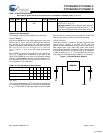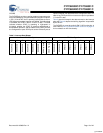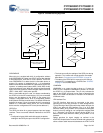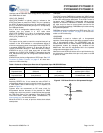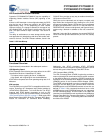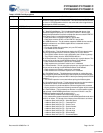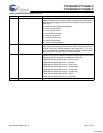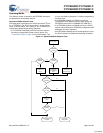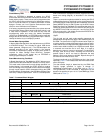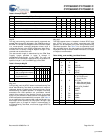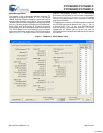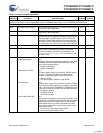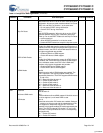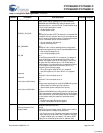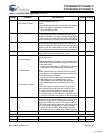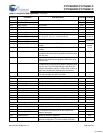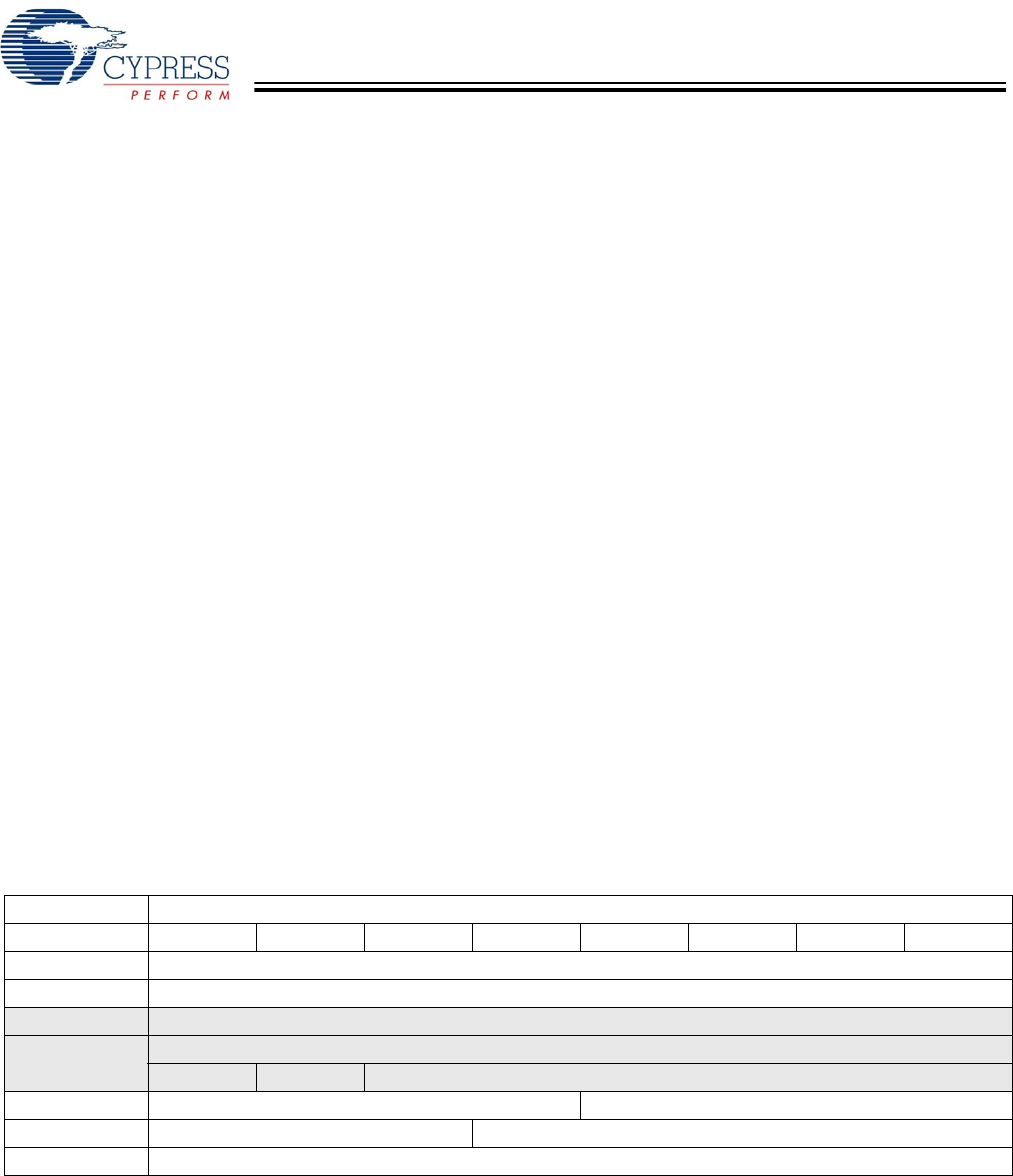
CY7C68300C/CY7C68301C
CY7C68320C/CY7C68321C
Document 001-05809 Rev. *A Page 19 of 42
Fused Memory Data
When no EEPROM is detected at startup, the AT2LP
enumerates with the VID/PID/DID values that are stored in the
fused memory space. These values can be programmed into
the AT2LP during chip manufacturing for high volume applica-
tions to avoid the need for an external EEPROM in some
designs. Contact your local Cypress Semiconductor sales
office for more information on this feature.
If no factory programming has been done, the values returned
from the fused memory space would all be 0x00, which is not
a valid mode of operation. In this case the chip uses the
manufacturing mode and return the default descriptors
(VID/PID of 0x4B4/0x6830). An EEPROM must be used with
designs that do not use factory-programmed chips in order to
identify the device as your company’s product.
Normal Mass Storage Mode
In Normal Mass Storage Mode, the chip behaves as a USB 2.0
to ATA/ATAPI bridge. This includes all typical USB device
states (powered, configured, etc.). The USB descriptors are
returned according to the values stored in the external
EEPROM or fused memory space. A unique serial number is
required for Mass Storage Class Bulk-Only Transport
compliance, which is one reason why an EEPROM or
factory-programmed part is needed.
Board Manufacturing Test Mode
In Board Manufacturing Test Mode the AT2LP behaves as a
USB 2.0 device but the ATA/ATAPI interface is not fully active.
This mode must not be used for mass storage operation in a
finished design. In this mode, the AT2LP allows for reading
from and writing to the EEPROM, and for board level testing,
through vendor specific ATAPI commands utilizing the CBW
Command Block as described in the USB Mass Storage Class
Bulk-Only Transport Specification. There is a vendor-specific
ATAPI command for EEPROM accesses (CfgCB) and one for
board level testing (MfgCB), as described in the following
sections.
There is a convenient method available for starting the AT2LP
in Board Manufacturing Test Mode to allow reprogramming of
EEPROMs without a mass storage device attached. If the ATA
Reset (ARESET#) line is LOW on power up, the AT2LP enters
Board Manufacturing Test Mode. It is recommended that a 10k
resistor be used to pull ARESET# to LOW. An easy way to pull
the ARESET# line LOW is to short pins 1 and 3 on the 40-pin
ATA connector with a 10k resistor, that ties the ARESET# line
to the required pull down on DD7.
CfgCB
The cfg_load and cfg_read vendor-specific commands are
passed down through the bulk pipe in the CBWCB portion of
the CBW. The format of this CfgCB is shown below. Byte 0 is
a vendor-specific command designator whose value is config-
urable and set in the configuration data (address 0x04). Byte 1
must be set to 0x26 to identify it as a CfgCB command. Byte2
is reserved and must be set to zero. Byte 3 is used to
determine the memory source to write/read. For the AT2LP,
this byte must be set to 0x02, indicating the EEPROM is
present. Bytes 4 and 5 are used to determine the start
address, which must always be 0x0000. Bytes 6 through 15
are reserved and must be set to zero.
The data transferred to the EEPROM must be in the format
specified in Ta bl e 11 of this data sheet. Maximum data transfer
size is 255 bytes.
The data transfer length is determined by the CBW Data
Transfer Length specified in bytes 8 through 11
(dCBWDataTransferLength) of the CBW (refer to Table 7).
The type/direction of the command is determined by the
direction bit specified in byte 12, bit 7 (bmCBWFlags) of the
CBW (refer to Table 7).
Table 7. Command Block Wrapper
Bits
Offset76543210
0–3 DCBWSignature
4–7 dCBWTag
8–11 (08h–0Bh) dCBWDataTransferLength
12 (0Ch) bwCBWFLAGS
Dir Obsolete Reserved (0)
13 (0Dh) Reserved (0) bCBWLUN
14 (0Eh) Reserved (0) bCBWCBLength
15–30 (0Fh1Eh) CBWCB (CfgCB or MfgCB)
[+] Feedback



